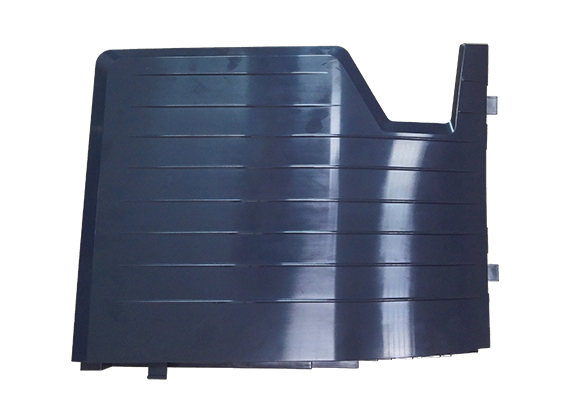I.Introduction
In the realm of plastic injection molding, the optimization of cooling channels within molds stands as a pivotal factor influencing production efficiency and cost-effectiveness. Understanding the intricacies of cooling channel design is crucial for businesses seeking to enhance their manufacturing processes. This article delves into the methodologies and strategies for optimizing cooling channels, offering valuable insights for those considering the acquisition of a Plastic Injection Mold.

II.Understanding Cooling Channels
One must first grasp their fundamental role in the injection molding process to comprehend the significance of optimizing cooling channels. Cooling channels are integral pathways to maintain temperature control during the molding cycle. Efficient cooling is vital to ensure uniform solidification of the molten plastic, ultimately affecting the overall cycle time.
III.Factors Influencing Cooling Channel Design
Several key factors influence the process of designing optimal cooling channels. Different types of plastics have distinct temperature control requirements, and understanding these variations is crucial for achieving efficient cooling. Complex mold geometries and intricate part designs also pose unique challenges that must be addressed in the cooling channel design phase.
In the context of a Plastic Injection Mold, the choice of materials for the mold itself plays a significant role. The selection of materials with superior thermal conductivity is essential for facilitating effective heat transfer during the cooling process.
Considering these factors is paramount in creating a cooling channel design that meets the basic requirements and addresses the specific demands of the intended plastic molding applications.
IV.Strategies for Optimization
Optimizing cooling channels in a Plastic Injection Mold involves employing strategic approaches to enhance efficiency and reduce cycle times. Here are key strategies that experts recommend:
- Advanced Materials: Utilizing materials with superior thermal conductivity can significantly improve the cooling process. High thermal conductivity materials facilitate quicker heat dissipation, contributing to faster cycle times.
- Conformal Cooling Technology: Embracing conformal cooling, which involves tailoring the shape of the cooling channels to match the contours of the molded part, can lead to more uniform cooling. This innovation minimizes uneven cooling and reduces the risk of defects.
- Proper Placement and Sizing: The strategic placement and sizing of cooling channels within the mold are critical. Ensuring even coverage and efficient heat extraction across the mold surface is vital to achieving optimal results.
These strategies collectively contribute to creating a Plastic Injection Mold with highly efficient cooling channels, promoting faster cycle times and improved overall productivity.
V.Simulation and Analysis Tools
Industry professionals often use advanced simulation and analysis tools to achieve precision in cooling channel optimization. These tools play a crucial role in predicting and fine-tuning the performance of cooling channels in a Plastic Injection Mold before production begins.
- Mold Flow Analysis Software: Mold flow analysis tools simulate the flow of molten plastic within the mold, predicting cooling performance and identifying potential issues such as uneven cooling or hot spots. This allows for adjustments in the design phase, saving time and resources.
- Thermal Imaging Technology: Utilizing thermal imaging technology provides real-time data on temperature distribution during the molding process. This enables precise adjustments to cooling channel designs based on actual operating conditions.
Integrating these tools into the design and optimization process empowers manufacturers to make informed decisions, ensuring that the cooling channels are tailored for maximum efficiency and performance.
VI.Best Practices in Cooling Channel Design
Case Studies
Examining real-world examples sheds light on successful cooling channel optimization projects. One notable case involves a collaboration between a renowned Plastic Injection Mold company and a client in the automotive industry. By strategically redesigning cooling channels for a complex automotive component, the cycle time was reduced by 20%, leading to substantial production cost savings.
Another case study highlights a partnership with a medical device manufacturer. Through meticulous cooling channel design tailored for medical-grade polymers, the Plastic Injection Mold supplier achieved precise temperature control, ensuring compliance with stringent industry standards and producing defect-free medical components.
Expert Testimonials
Industry experts emphasize the significance of cooling channel optimization. Dr. Amanda Rodriguez, a leading expert in injection molding technology, notes, “Efficient cooling channel design is paramount for achieving consistent part quality and minimizing production time. It requires a collaborative effort between mold designers and material scientists.”
These case studies and expert testimonials underscore the tangible benefits of investing in cooling channel optimization, making it a key consideration for businesses searching for top-quality Plastic Injection Molds.
VII.Cost-Benefit Analysis
Efficiency gains from optimizing cooling channels in a Plastic Injection Mold must be weighed against the initial investment. Conducting a thorough cost-benefit analysis is essential for businesses considering this optimization strategy.
- Initial Costs vs. Long-Term Savings: While implementing advanced cooling channel designs may involve higher upfront costs, long-term savings in reduced cycle times, energy consumption, and minimized defects contribute to cost-effectiveness.
- Production Downtime: The time required for mold modification should be considered. However, when strategically planned during scheduled maintenance periods, the impact on overall production schedules can be minimized.
- Quality Improvement: Faster cycle times from optimized cooling channels often translate to improved part quality. This, in turn, reduces the costs associated with rework, rejects, and customer complaints.
By weighing these factors, businesses can make informed decisions about investing in advanced cooling channel designs for their plastic injection molds, ultimately optimizing production efficiency and enhancing the bottom line.
VIII.Common Pitfalls and Troubleshooting
Even with careful planning, cooling channel optimization in a Plastic Injection Mold may encounter challenges. Recognizing common pitfalls and implementing effective troubleshooting solutions is crucial for ensuring smooth operations:
- Uneven Cooling: Addressing uneven cooling is essential to prevent warpages and defects. This may involve revisiting the placement and design of cooling channels or adjusting cooling rates.
- Material Selection Issues: If the chosen mold material does not meet thermal conductivity requirements, it can hinder the effectiveness of cooling channels. Reevaluating and selecting materials with better thermal properties is a potential solution.
- Clogging and Maintenance: Cooling channels can face issues like clogging due to debris or scaling. Regular maintenance and cleaning protocols are necessary to prevent such problems and ensure consistent performance.
By proactively identifying and troubleshooting these issues, businesses can maintain the efficiency of their plastic injection molding processes, ensuring optimal cooling channel performance.
IX.Industry Trends and Innovations
Staying abreast of industry trends is essential for companies looking to invest in cutting-edge Plastic Injection Mold technology. Several trends and innovations are shaping the landscape of cooling channel design:
- Additive Manufacturing for Cooling Channels: The integration of additive manufacturing allows for intricate and customized cooling channel designs that were previously challenging to achieve. This innovation enhances cooling efficiency and overall mold performance.
- Smart Cooling Systems: The advent of intelligent technologies introduces the concept of automated cooling systems. These systems adjust cooling parameters in real time based on the molding conditions, optimizing efficiency and reducing energy consumption.
- Data-Driven Design: Data analytics in cooling channel design is gaining prominence. Analyzing data from molding processes allows for continuous optimization and fine-tuning of cooling strategies for improved performance.
Understanding and embracing these trends positions businesses at the forefront of technological advancements, ensuring their plastic injection molding processes remain efficient, cost-effective, and competitive.
X.Conclusion
In conclusion, optimizing cooling channels in a Plastic Injection Mold is a multifaceted process that significantly influences production efficiency and cost-effectiveness. Through understanding the fundamentals, considering material choices, and implementing advanced strategies, businesses can achieve faster cycle times, improved part quality, and long-term cost savings.
Using simulation tools, case studies, and expert testimonials underscores the practical benefits of investing in optimized cooling channel designs. While the initial costs and potential downtime must be considered, the long-term gains in efficiency and quality make it a worthwhile investment.
As the industry evolves, trends such as additive manufacturing and intelligent cooling systems present exciting opportunities for further enhancement. Embracing these innovations positions businesses for sustained success in the competitive landscape of plastic injection molding.
For those seeking a reliable Plastic Injection Mold supplier or partnering with a reputable company, prioritizing cooling channel optimization in the selection process ensures alignment with modern industry standards and best practices.
By making informed decisions and staying attuned to industry advancements, businesses can unlock the full potential of their plastic injection molding processes, achieving optimal performance and maintaining a competitive edge in the market.
